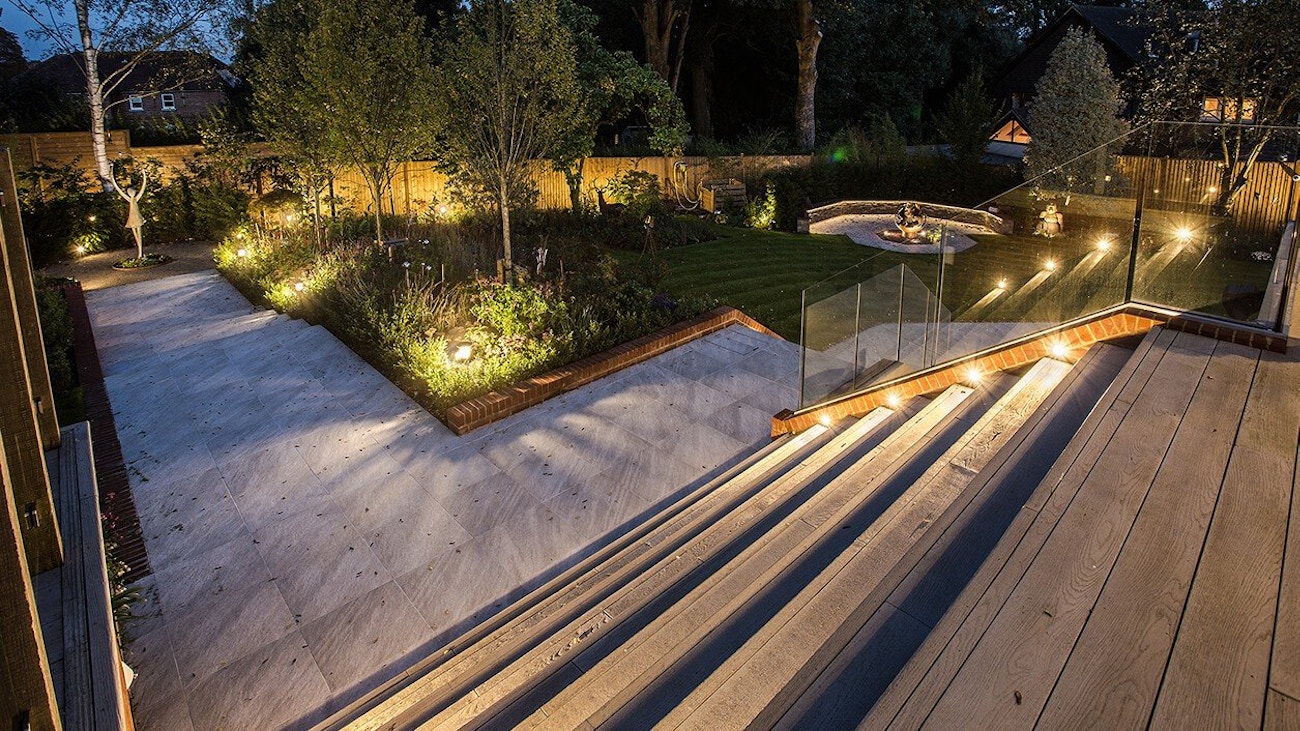We’re now approaching the cold winter season, where sunlight becomes more precious and nights begin to draw in. As darkness starts to flood your outdoor space, it’s time to think about your garden and how lighting design can be used to improve your time spent outdoors.
Here’s our step by step guide to enhancing your garden with lighting design.
Step 1: Begin with task lighting
The first step to lighting your outdoor space should define where you actually need light. Are there any pathways or stairs with potential trip hazards? What about patios, BBQ areas and outdoor dining spaces? Figuring out where light is essential will allow you work around the core lighting and explore the many options available to you.
Once this has been complete, you’ll need to find appropriate lighting fixtures for each area/task.
Path lights, recessed step lights, LED flood lights, and spotlights are just a few examples of fixtures that could be used to create functional task lighting. To view a complete list of garden lighting fixtures and their uses, take a look at our guide to landscape lighting.
Before making the final decision on your fixtures, it’s important to remember that garden lights are exposed to the elements, and poor-quality fixtures won’t last. Good quality LED’s will last for 35,000 to 50,000 hours even when exposed to harsh weather conditions. At Hampshire Light, we recommend and supply our clients with the highest quality lighting fixtures. Using globally renowned lighting brands such as Occhio, and lighting control brands such as Lutron, we ensure each and every requirement is fulfilled for your project.
![garden lighting design]()
Step 2: Highlight stand-out features
Selecting focal points throughout your garden such as flower beds, water features, and trees is the next step to creating an opulent outdoors experience. Where features are best highlighted is when textures like water, foliage, and brick are enhanced with lighting. This is known as accent lighting.
To create a stunning outdoor lighting scheme, you need to think beyond light. Experiment with leaves, plants, and water and how they interact with light for added drama with shadows.
![architectural lighting design]()
Step 3: Think about security
A huge advantage that garden lighting brings to your space is added security. You need to think about whether there are any dark areas or points of accesses that could leave your property vulnerable. Flood lights placed around buildings fitted with motion sensors are perfect for deterring any potential criminal activity. If someone with bad intentions suddenly becomes visible, they’ll think twice about their actions.
![landscape lighting design]()
Step 4: Consider architectural exterior lights
Moving away from the garden itself, if the connected building is particularly beautiful, lighting the exterior architectural features will do your outdoor space wonders. Not only will lighting the buildings’ exterior help improve security but will play a fundamental role when it comes to setting a great first impressions for guests.
![exterior lighting]()
Step 5: Explore lighting controls
The final step to a beautiful garden lighting scheme is exploring lighting controls. This covers how and where your lights will be turned on/off and can offer incredible flexibility with your lighting. If you’re not yet familiar with lighting controls and the systems available, take a look at our complete guide to lighting controls. This will help you understand the basics of control systems and give you further information to help you decide on what’s best for your project.
If you’re looking to enhance the lighting in your garden, be sure to collaborate with a lighting design expert for the very best end result. For assistance with your garden lighting project, contact us at Hampshire Light today for a complimentary design consultation.






